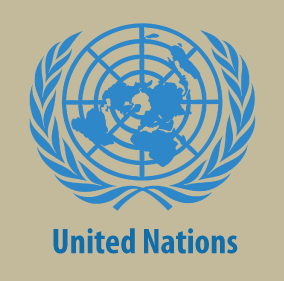Full Form of UNO
Full Form of UNO
UNO- United Nations Organization

The full form of UNO is United Nations Organization. It was founded on October 24, 1945, with the objective of UNO, which is to preserve peace and security, bloom bond between nations, attain international co-operation, human rights, promoting sustainable development, climate action, and bring balance between nations.
In the world, it is the represented, enormous, known, and authoritative intergovernmental organization. The UNO's head office is in New York City, and significant offices are located in Geneva, Nairobi, Vienna, and The Hague. It was created after World War II; 51 nations approached together with a familiar objective of forbidding future wars and preserving peace and security. Now 193 nations are representing worldwide sovereign states.Leading agencies, funds, and programs in UNO systems are the United Nations Educational, Scientific, and Cultural Organization (UNESCO), World health organization (WHO), World Bank Group, UNICEF, and World Food Programme.
Structure of United Nations Organization
Six main structures are:-
- The General Assembly,
- The Trusteeship Council,
- The international court of Justice,
- The Security Council,
- The Economic and Social Council (ECOSOC) and
- The UN Secretariat.
The General Assembly- It is the leading organ of the UNO. All members come across in the General Assembly hall in New York every year for the common debate. Each country head attends and addresses. They decide on crucial questions like peace and security, the entrance of new members, and the adoption of a budget, obligatory a two-thirds majority of the members present in the general assembly. On other questions, majority votes are adjudged. The assembly is conducted by the President, who serves for one year term of service.
The Security Council- The Security Council, is answerable for preserving peace and security internationally. It has 15 members: five permanent members (China, France, Russia, the United Kingdom, and the United States) with veto power and ten non-permanent members (Estonia, India, Ireland, Kenya, Mexico, Niger, Norway, Saint Vincent and the Grenadines, Tunisia and Vietnam)elected for two years by the general assembly and each member has one vote. Under the charter article 25, the Security Council has the ability to obey council decisions. The presidency of the Security Council revolve or changes every month.
Economic and social council- It is answerable for collaboration among states about economic and social affairs. It has 54 members who are elected by General Assembly for a three-year. The President opted for one year. The meeting is carried each year in the month of July in New York or Geneva. It serves as the specialized agency in the coordination and collaboration between the UN's.
Trusteeship council- It was founded in 1945 bythe UN charter to dispense international operation for 11 Trust Territories. Trusteeship council was created to lead colonial ownership that was former League of Nations mandates. The operation of the trusteeship council was suspended on 1 November 1994 over the independence of Palau.
International Court of Justice- The international court of Justice is situated in, The Hague, Netherlands. It is the only core structure that is not located in New York. It is the primary judicial structure of the United Nations. ICJ's role is to resolve the discord between states and give specialized agencies legal opinions and orders. UN general assembly elects 15 judges for nine years.
Secretariat-The UN secretariat is led by the secretary-generaland ten thousand international UN staff members. It gives information and facilities required by the organization's central bodies. Secretary-general is destined by the general assembly on the appeal of the Security Council for five years. They help in the organization conferences, the writing of reports, and the devisingof a budget.
Four main purposes of the UNO
- To maintain peace all over the world
- To establish bond worldwide
- To support nations work with each other to enhance underprivileged lives, to defat starvation, illiteracy and to motivate dignity for each other’s rights and freedoms
- To bring balance between nations for attaining goals.